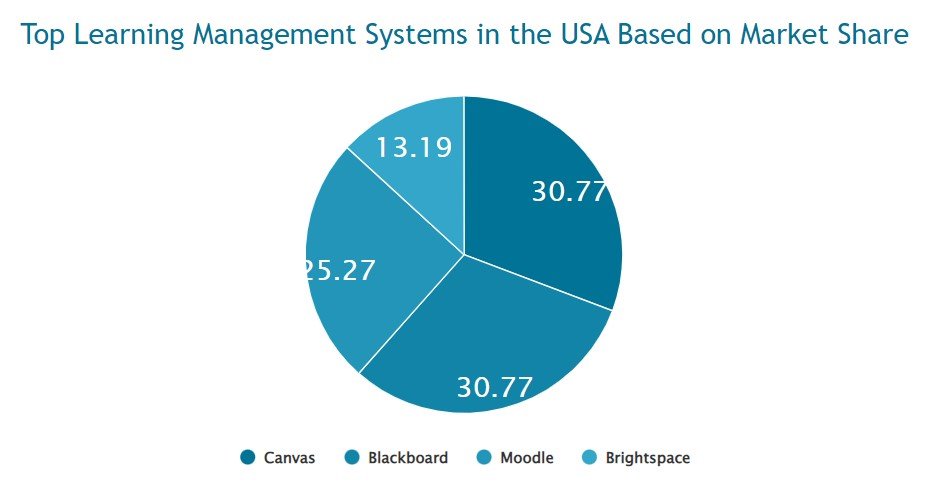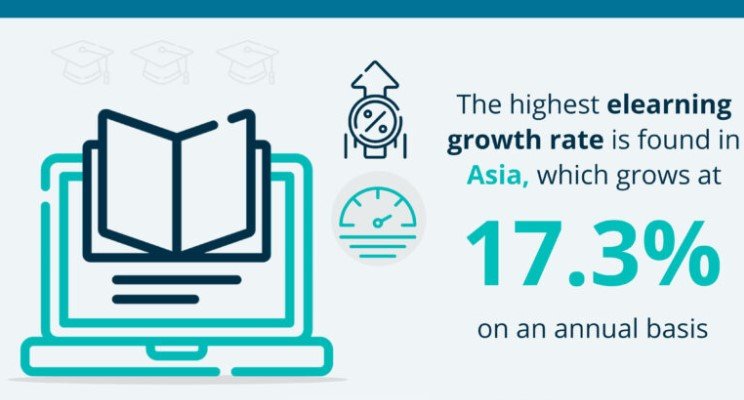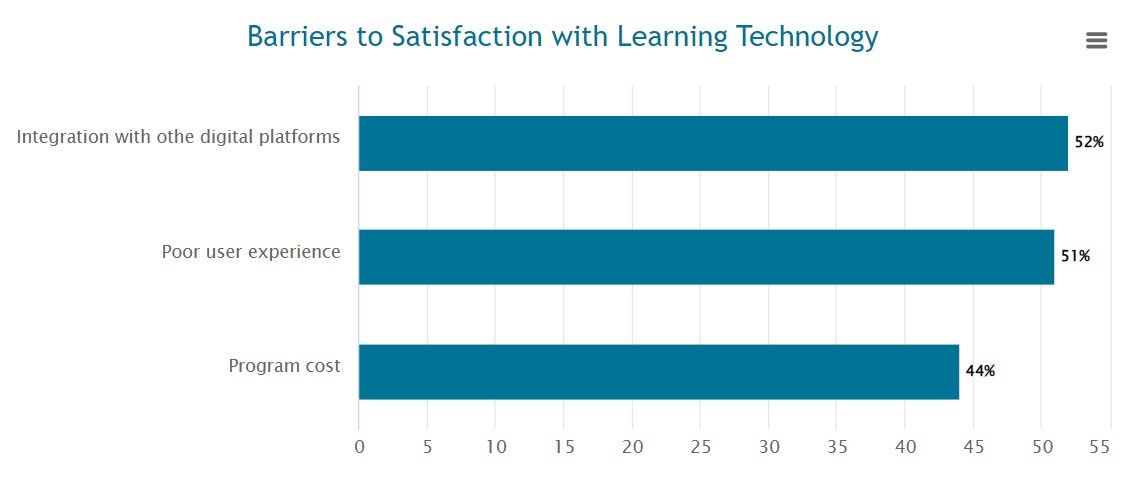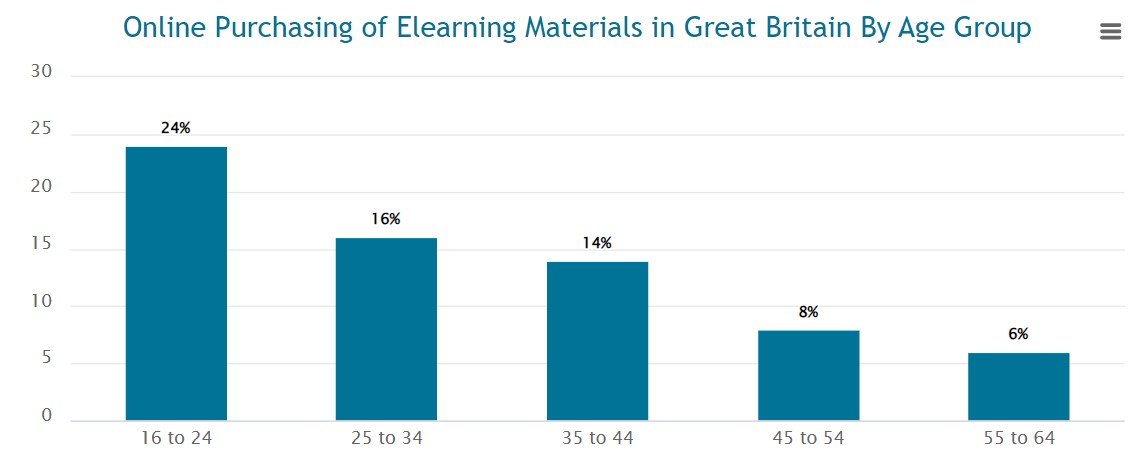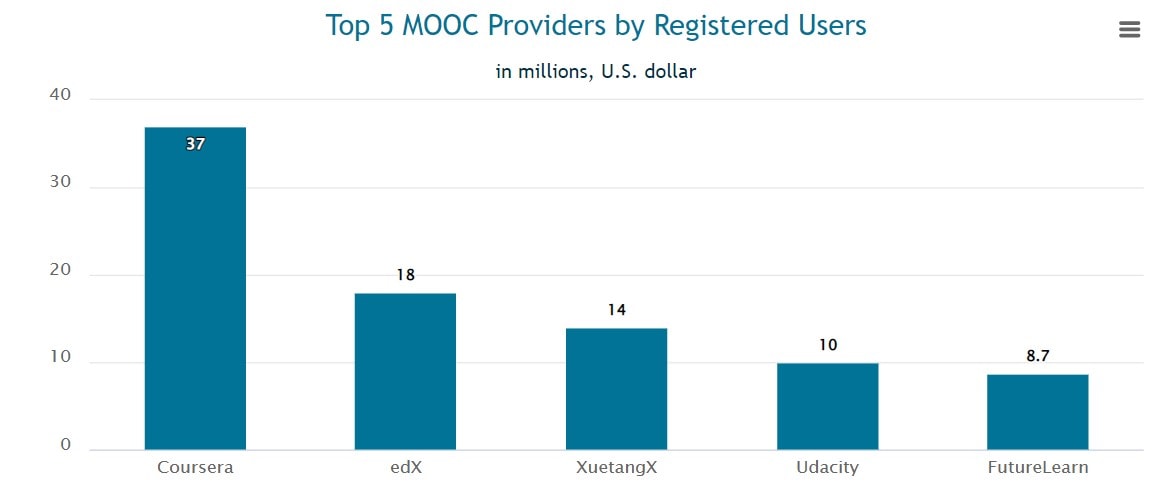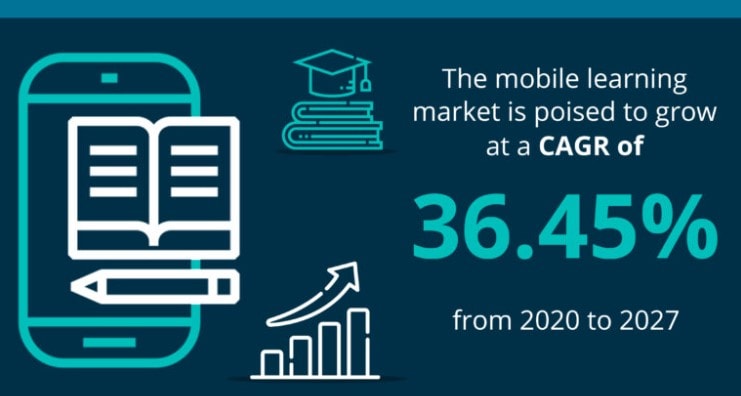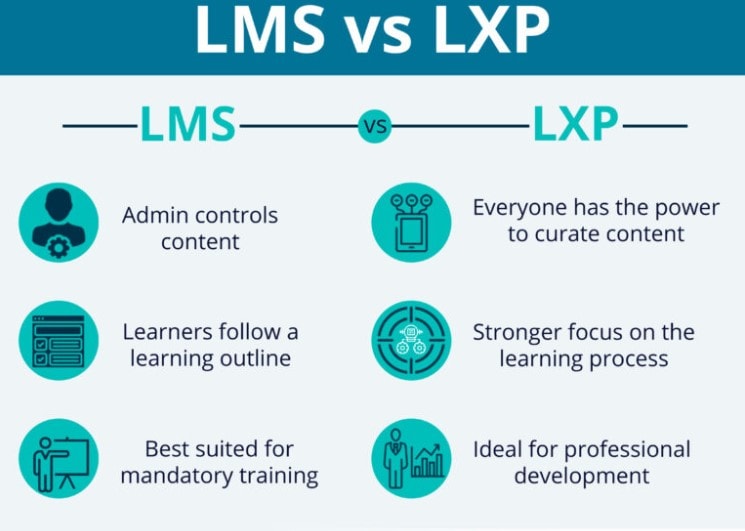Technological advancements have had a significant impact on the education sector in recent years. The evolution of information and communications technology (ICT) in the academic context changed the path of teaching and learning practices, allowing higher education and secondary institutions to experiment with new ways of designing, delivering, and distributing educational resources.
Learning management systems (LMS), software applications that bring together academic programs, subject study guides, and training resources in one platform, are one such outcome of tech, or educational technology.
The introduction of a learning management system (LMS) into the education sector has had a favorable influence on both students and teachers. LMS applications have aided in the development, adaptation, distribution, and management of learning techniques.
On that note, this article looks deeper into the global usage of LMS programs. The newest statistics on the LMS market, usage, adoption, accessibility, and impact on the education sector are provided here to give you an idea of where the LMS industry is now and where it’s going in the near future.
Contents
LMS Market Statistics
The first LMS program was created by psychology professor Sidney Pressey in 1924 when he produced the first electronic teaching system. The device looked like a typewriter with a window that asked students multiple-choice questions.
LMS software has grown in popularity in academia since then, allowing educators and students to access instructional content in a number of formats.
According to a recent market study (Global Opportunity Analysis, n.d.), the LMS industry will be worth $28.1 billion by the end of 2025.
A number of factors have moved the LMS market forward: broad government initiatives for LMS growth, expanding use of digital learning, growing propensity toward bring-your-own-device rules, and the advent of artificial intelligence (AI) and machine learning (ML) in LMS. As a result, the leading players in the worldwide LMS market’s revenues are steadily expanding.
- The LMS market is anticipated to increase at a 19.6% CAGR between 2018 and 2023, from $9.2 billion to $22.4 billion.
By 2021, the global LMS and e-learning markets will reach $15.72 billion. - Approximately $38 million will be spent on mobile learning in 2020.
- From 2020 to 2024, the global corporate LMS market is anticipated to expand at a compound annual growth rate of 23 percent, generating $12.48 billion in revenue.
- Global investments in education technology are expected to exceed $252 billion by 2020.
- The global e-learning market is expanding at a yearly rate of 14%.
- Canvas and Blackboard hold a 28 percent share of the United States higher education LMS market.
Source: eLiterate (2018)
LMS Software Adoption Statistics
North America
As educational institutions and corporate sectors alike begin to install LMS solutions to improve the learning experience, LMS usage is spreading across North America.
According to a report published by Zion Market Research (Learning Management System Market, 2017), North America leads the way in learning management system adoption due to the growing demand for effective and high-quality education.
- Canvas is the most popular learning management system (LMS) in North America, with approximately 19,238,279 users as of the end of 2019.
- Moodle registered 11,289,190 students from North America in 2019, while Blackboard listed 10,566,798 students.
- With the widespread adoption of LMS technology in North America, its CAGR is 4%.
Canvas dominates the LMS market, accounting for 35% of the entire North American LMS market.
Latin America
Latin America’s increased mobile use is resulting in a plethora of prospects for the ed-tech sector. As a result, the Latin American e-learning industry grew significantly from 2016 to 2020 (E-learning Market Trends, 2020), and it is predicted to increase at a CAGR of 14% over the following five years.
The increasing use of LMS in Latin America is also due to the demand for corporate learning. Businesses are turning to online learning tools to facilitate corporate training and keep up with the accelerated evolution of a global economy as markets and industries become increasingly globalized.
According to a study by Endeavor INSIGHT EdTech, the ease of online learning and career prospects are two of the primary reasons for the increasing use of online educational resources in Latin America.
- The e-learning market in Latin America was worth $2.1 billion in 2016 and is expected to expand at a CAGR of 14% over the next five years.
- In terms of revenue, Latin America is the fourth largest tech market.
- By 2023, the Latin American e-learning market is estimated to generate $3 billion in sales.
- In 20 Latin American countries, almost 12 million adults are engaged in some type of online education.
- Between 2016 and 2017, the number of Lingokids users increased by 489 percent in Argentina, 500 percent in Venezuela, and 425 percent in Brazil.
Europe
Online education is growing more popular in Europe as more European colleges begin to offer online degrees to international students. Educational institutions that offer short courses and full degree programs continue to thrive, with enrollment numbers rising year after year.
According to Eurostat data (Online Courses, 2019), Finland has the highest percentage of people taking at least one type of online course, followed by the United Kingdom, Sweden, and Spain.
- In Finland, 21% of individuals have taken an online course on any subject, followed by the United Kingdom with 19%, Sweden with 18%, and Spain with 15%.
- It is predicted that LMS will grow at almost 27% CAGR in Europe by 2020.
- 12.5% of LMSs are cloud-based.
- The European LMS market is expected to generate the second-highest revenue by 2022.
- The growth rate of LMS in Eastern Europe is 16.9% per year.
Asia Pacific
The growing need for e-learning and a preference for on-the-go learning techniques are driving LMS adoption in the Asia Pacific area.
In the near future, the adoption of LMS platforms is projected to be driven by improvements in educational resources and economic progress in emerging countries in the Asia Pacific area.
- A total of $11.5 billion was generated by LMS in Asia in 2012, up from $5.2 billion in 2011.
- Asia Pacific’s LMS market is expected to grow at a CAGR of 34.2% by 2022.
- At 17.3% per year, Asia has the highest growth rate for e-learning.
Africa
Africa’s progress is built on a foundation of education. A rising number of African countries have used learning approaches in order to improve learning efficacy. As a result, Africa has become a burgeoning market for e-learning and learning management systems (LMS).
Despite Africa’s growth in LMS adoption, issues that obstruct successful LMS implementation remain. While online learning has the potential to increase education quality in Africa, obstacles such as Internet connectivity, availability of online curricula, and a lack of teacher training are impeding LMS implementation throughout the continent.
- The LMS industry in Africa is growing at a pace of 15.2 percent each year.
- In Africa, the LMS business produced $512.7 million in sales in 2016.
Barriers to LMS adoption
LMS User Statistics
An LMS is a software application that is used to deliver training programs and education courses, according to its definition.
LMS packages are being adopted by colleges and universities to support online and distance learning. Educational institutions can administer and provide online courses to off-site students using LMS platforms.
LMS platforms are frequently employed in the corporate world in addition to academic settings. LMS systems are used by HR experts to train employees and managers, while entrepreneurs utilize them to learn marketing, accountancy, and other short-term skills-based courses.
LMS systems are also popular among self-learners and hobbyists. Crafts, photography, blogging, gardening, woodworking, exercising, and other self-taught skills and hobbies are now available through a variety of learning programs.
- The number of LMS users is currently projected to be 73.8 million.
- Web-based LMS solutions are used by about 87 percent of active users.
- Corporate executives (65 percent) and managers are the most common users of learning management systems (35 percent ).
- Adults make up 37% of LMS users, while young people make up 28%.
- In the United Kingdom, 24 percent of persons who buy learning materials online are between the ages of 16 and 24, 16 percent are between the ages of 25 and 34, and 14 percent are between the ages of 35 and 44.
- Long-established tech enterprises account for 30% of LMS buyers.
- Ninety percent of pupils prefer online learning to traditional ways.
- Approximately 49% of students have taken at least one online course.
- Approximately 4.6 million college students are enrolled in online courses.
- Government institutions account for 2% of the LMS software market.
- The education sector accounts for one-fifth of the total global LMS market or 21%.
- In the LMS market, real estate and nonprofit organizations each account for 3%.
- Other industries represented in the LMS market include technology (12 percent), manufacturing (9 percent), healthcare and consulting (7 percent), and software development firms (4 percent).
Source: Office for National Statistics (2019)
LMS Accessibility Statistics
Current LMS Statistics and Predictions
Today’s educational institutions use technology to cope with modernization and facilitate institutional reform. According to the latest Global Education Census Report (New Global Survey, 2019), the use of technology in classrooms around the world is increasing, with 48 percent of students using desktop computers, 42 percent using smartphones, 33 percent using interactive whiteboards, and 20 percent using tablet devices.
In recent years, learning management systems (LMS) have become increasingly important in higher education teaching paradigms. In the learning field, several trends have emerged, including the emergence of MOOC platforms, individualized learning experiences, the transfer from LMS to learning experience platforms (LXP), and mobile learning.
MOOC Platforms Statistics
Massive Open Online Courses, or MOOCs, are online courses offered by higher education institutions to provide students from all over the world with accessible and cheap remote learning possibilities.
Such online courses are offered by universities such as Harvard University and the Massachusetts Institute of Technology on a variety of topics and at various educational levels. MOOC-based degrees have lower tuition, more flexible timetables, and easier registration than prior online degrees.
Around 900 colleges around the world already offer MOOC-based degrees, with another 2000 courses expected to be added by the end of 2018. (Shah, 2019).
Coursera, with 37 million registered users, Edx, with 18 million users, and XuetangX, with 14 million users, are the top MOOC providers. The number of MOOCs has exploded in recent years as a result of increased demand for shorter courses and more flexible scheduling.
- Over 900 universities around the world have developed or announced 13,500 MOOCs as of 2019.
- Around 2,500 courses have been launched by 450 universities in total.
- Based on the number of technology-related courses introduced in 2019, technology ranks first in terms of course distribution by subject (19.8%).
- A total of 19.7% of courses established in 2019 are related to business.
- Coursera is the most popular MOOC platform, with over 37 million members.
Source: EdSurge (2018)
Mobile Learning Statistics
Because of the growing popularity of mobile devices, educational institutions are rethinking their learning practises and developing mobile learning programmes.
Mobile-enabled learning programmes are growing increasingly popular, particularly as the tech-savvy Millenials and Gen-Zers begin to overtake the global student population.
The advantages of mobile learning have been established in a number of research. The main benefits of mobile learning, according to a study published in the Journal of Continuing Education in the Health Professions, include improved knowledge acquisition, updated instructional materials, and validated information.
The need for mobile learning led to its expansion, with the market valued at $27.32 billion in 2020 and expected to increase at a CAGR of 36.45% from 2020 to 2027. (Mobile Learning Market Size, n.d.).
- In 2020, the mobile learning industry is expected to be worth $27.32 billion.
- When using mobile devices instead of laptops, 70% of students are more motivated to learn.
- Learners who use mobile devices say they can easily apply what they’ve learned 29% of the time.
- According to 72 percent of mobile learners, mobile learning modules engage them more.
- Organizational training materials are accessed by 30% of smartphone users.
Personalized Learning Experience Statistics
Personalized learning has gained popularity in a number of educational institutions throughout the years. It is becoming a priority for philanthropy and is propelling the multibillion-dollar edtech industry.
Many studies have been dedicated to proving personalised learning’s success in the regular classroom setting since 2009, when the Bill and Melinda Gates Foundation allocated $300 million to finance research and development for personalised learning.
- According to 25% of educators, individualised learning is a promising concept.
- Personalized learning is viewed as a transformational way to improving the K-12 curriculum by 21% of respondents.
- Personalized learning is a threat to public education for 8% of instructors polled.
- Personalized learning is viewed as a fleeting trend by 11 percent of teachers, while 10 percent say it is not even on their radar.
Source: Klein (2019)
LXP Statistics
A number of startups built next-generation learning portals that make training content accessible a few years ago, including Edcast, Degreed, and Pathgather.
The LXP and LMS programmes have two separate goals. An LMS places a heavy reliance on the administrator to manage learning, whereas an LXP gives learners the freedom to explore learning resources and find content that is appropriate for their level of understanding.
LXPs are essentially improved versions of LMS programmes in that they combine knowledge management, content management, and learning management into a single platform.
LXPs are growing more popular, and more firms are gradually moving away from LMS programmes and toward LXPs.
- The LXP market is expected to be worth $200 million by 2020, with yearly growth of double that amount.
- The LXP market is expected to rise to $15.7 billion in the following three years.
The Future of LMS and eLearning
Quick Links:

